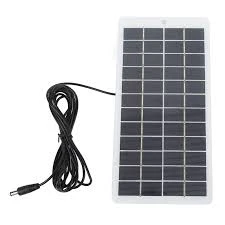Understanding Solar Panel Power Output per Square Foot for Efficient Energy Use
Understanding Solar Panel Watts per Square Foot
As the world increasingly shifts toward renewable energy sources, solar panels have become a crucial element in the quest for sustainable energy solutions. One critical metric that often arises in discussions about solar energy is the amount of power generated by solar panels, specifically measured in watts per square foot. Understanding this figure is essential for homeowners, businesses, and policymakers who are considering the feasibility and efficiency of solar energy systems.
What Does Watts per Square Foot Mean?
Watts per square foot is a measurement that indicates the amount of electricity a solar panel can produce for each square foot of its surface area. This value helps assess the efficiency of solar panels in converting sunlight into electrical energy. The higher the watts per square foot, the more efficient the solar panel is in harnessing solar energy.
Solar panels come in different types and efficiencies, which significantly influences their watts-per-square-foot ratings. The two most common types of solar panels are monocrystalline and polycrystalline. Monocrystalline panels are generally recognized for their higher efficiency, often producing between 15-22% efficiency ratings, whereas polycrystalline panels typically achieve efficiencies between 13-16%. Consequently, a monocrystalline solar panel may produce around 20 watts per square foot, while a polycrystalline panel may generate roughly 15 watts per square foot under optimal sunlight conditions.
Factors Influencing Solar Panel Efficiency
Several factors can affect the efficiency and watts-per-square-foot ratings of solar panels
1. Solar Irradiance This refers to the amount of solar energy received per unit area at a given location. Areas with high solar irradiance can significantly boost the output of solar panels, leading to a higher number of watts generated per square foot.
2. Panel Orientation and Angle The arrangement and tilt of solar panels relative to the sun’s position can greatly influence their performance. Panels that are correctly angled and oriented toward the sun will capture more sunlight, yielding higher energy output.
solar panel watts per square foot

3. Temperature Although solar panels are designed to produce electricity from sunlight, they can be affected by temperature. Higher temperatures can reduce the efficiency of solar cells, which may lead to a lower output of watts per square foot.
4. Shade and Dust Accumulation Any obstructions such as trees, buildings, or dust on the panel’s surface can diminish the amount of sunlight that reaches the solar cells. Regular maintenance and positioning of panels can help mitigate these issues.
5. Advancements in Technology Innovations in solar technology continue to emerge, resulting in panels with higher efficiencies. New materials and designs are constantly being developed to improve the performance of solar panels, leading to increased watts per square foot.
Real-World Applications and Considerations
When considering solar energy solutions for residential or commercial properties, understanding watts per square foot enables better planning. For instance, in areas with limited roof space, selecting high-efficiency solar panels can maximize energy production without requiring an extensive footprint. Conversely, for larger areas, efficiency may be less of a concern, allowing for a balance between cost and power output.
It’s also essential to assess local regulations, incentives, and the overall energy usage patterns of a household or business. Doing so will create a clearer picture of how solar energy can fit into one’s energy strategy.
Conclusion
The metric of watts per square foot is a pivotal indicator when evaluating solar panel performance and suitability. By understanding the efficiencies of different types of panels and considering various influencing factors, consumers can make informed decisions that align with their energy needs and sustainability goals. With continued advancements in solar technology, the potential for greater efficiency and energy production will only expand, making solar energy an increasingly viable solution for a sustainable future.
-
Unlocking Energy Freedom with the Off Grid Solar InverterNewsJun.06,2025
-
Unlock More Solar Power with a High-Efficiency Bifacial Solar PanelNewsJun.06,2025
-
Power Your Future with High-Efficiency Monocrystalline Solar PanelsNewsJun.06,2025
-
Next-Gen Solar Power Starts with Micro Solar InvertersNewsJun.06,2025
-
Harnessing Peak Efficiency with the On Grid Solar InverterNewsJun.06,2025
-
Discover Unmatched Efficiency with the Latest String Solar InverterNewsJun.06,2025







